
One of the most important political events of the year was the constitutional crisis of 1993. It is also known as ‘October Coup’ or ‘Shooting of the White House’. The crisis was caused by the conflict between then-President Boris Yeltsin and the Congress of the Soviets, which, according to the Russian Constitution that was in force at that time, was the most powerful body and had to ratify most of Yeltsyn’s decisions and appointments.
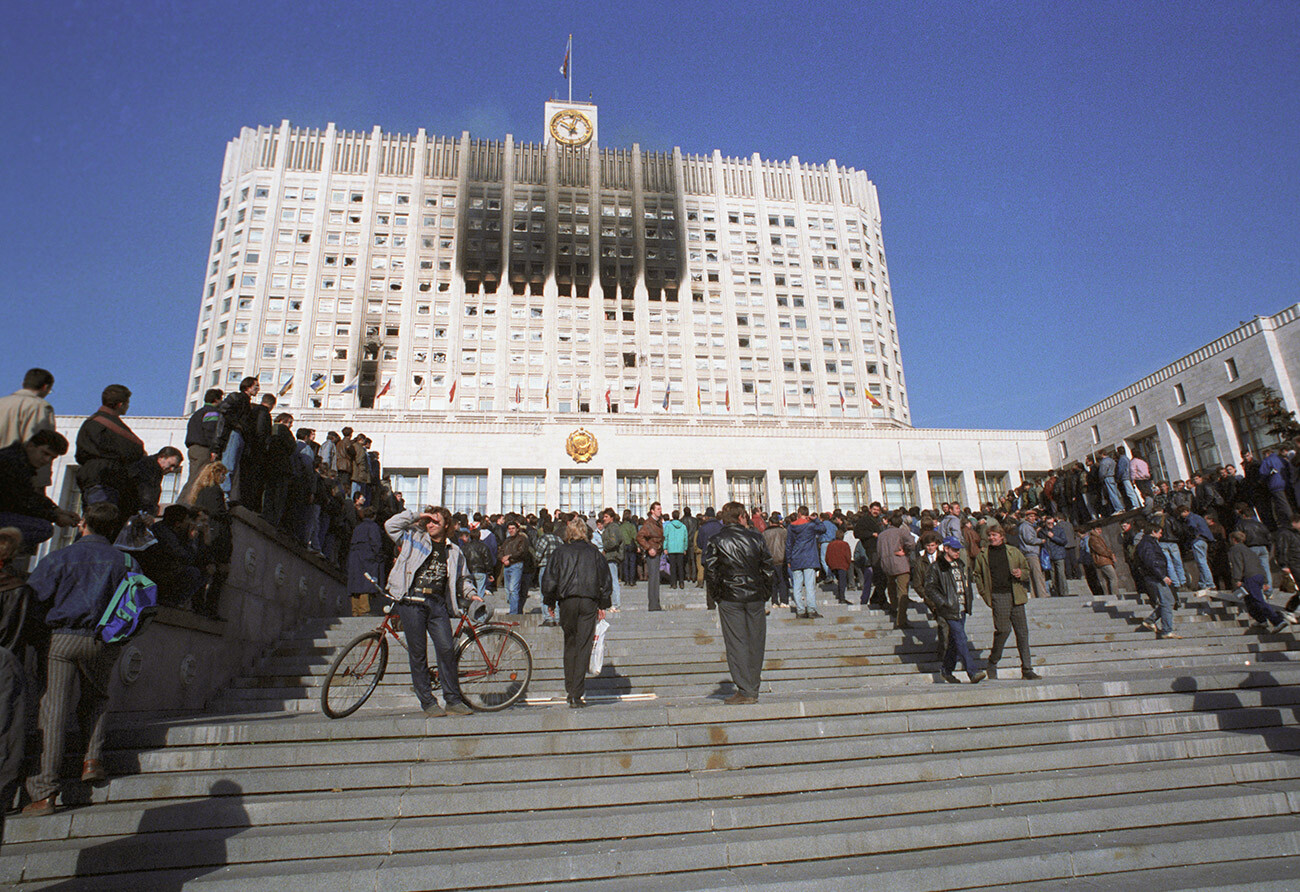
The two-day conflict began with the storming of the Ostankino television tower and ended with the shelling of the Russian White House, which was the residence of the Congress of Soviets. (Read more here).

Moscow fell into chaos, with barricades, mass riots and demonstrations.

The crisis seemed so violent, that the Patriarch of the Russian Orthodox Church even led a mass liturgy praying for a peaceful solution.
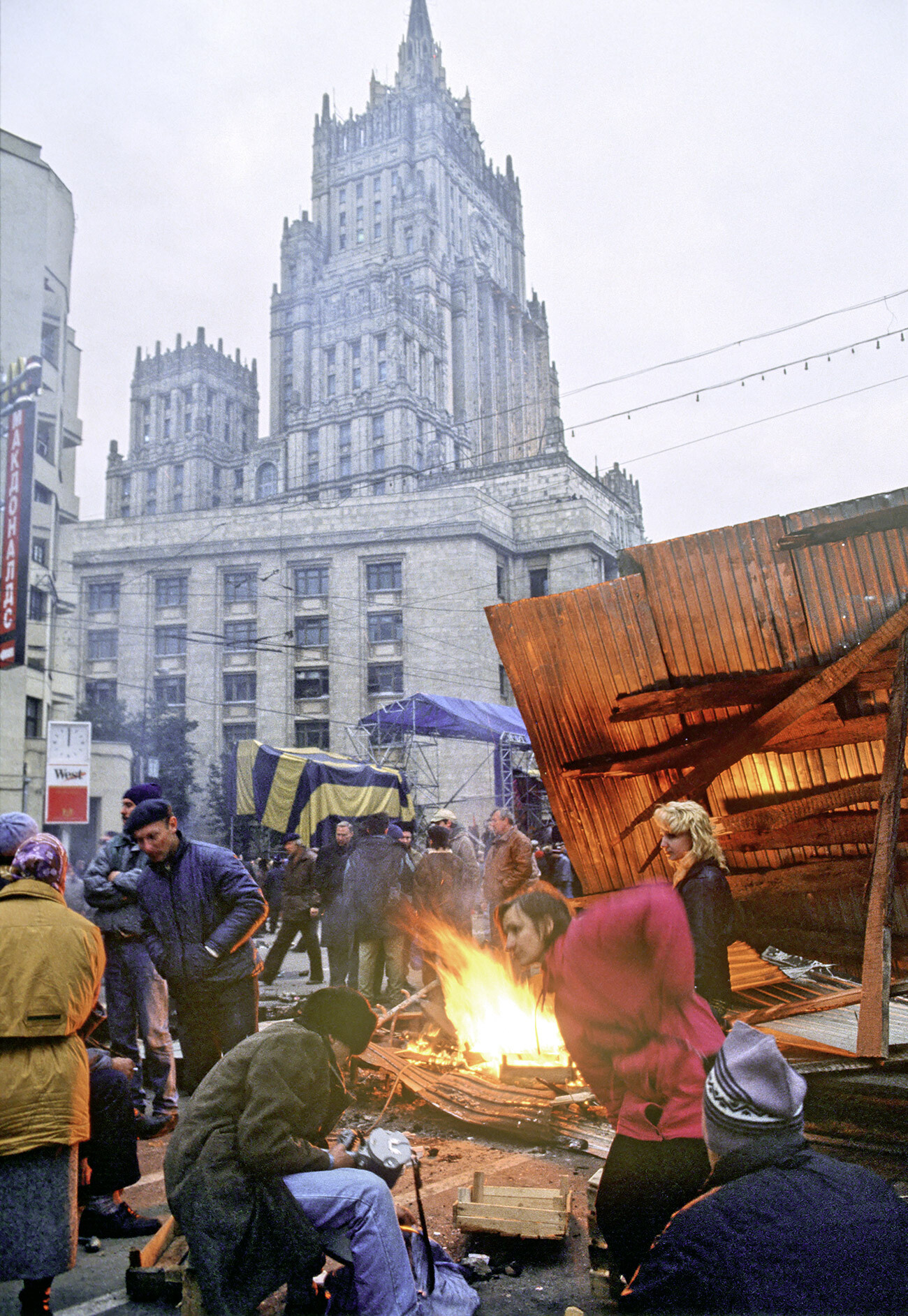
About 200 people died in these riots. And, as a result, a new constitution was accepted in December.
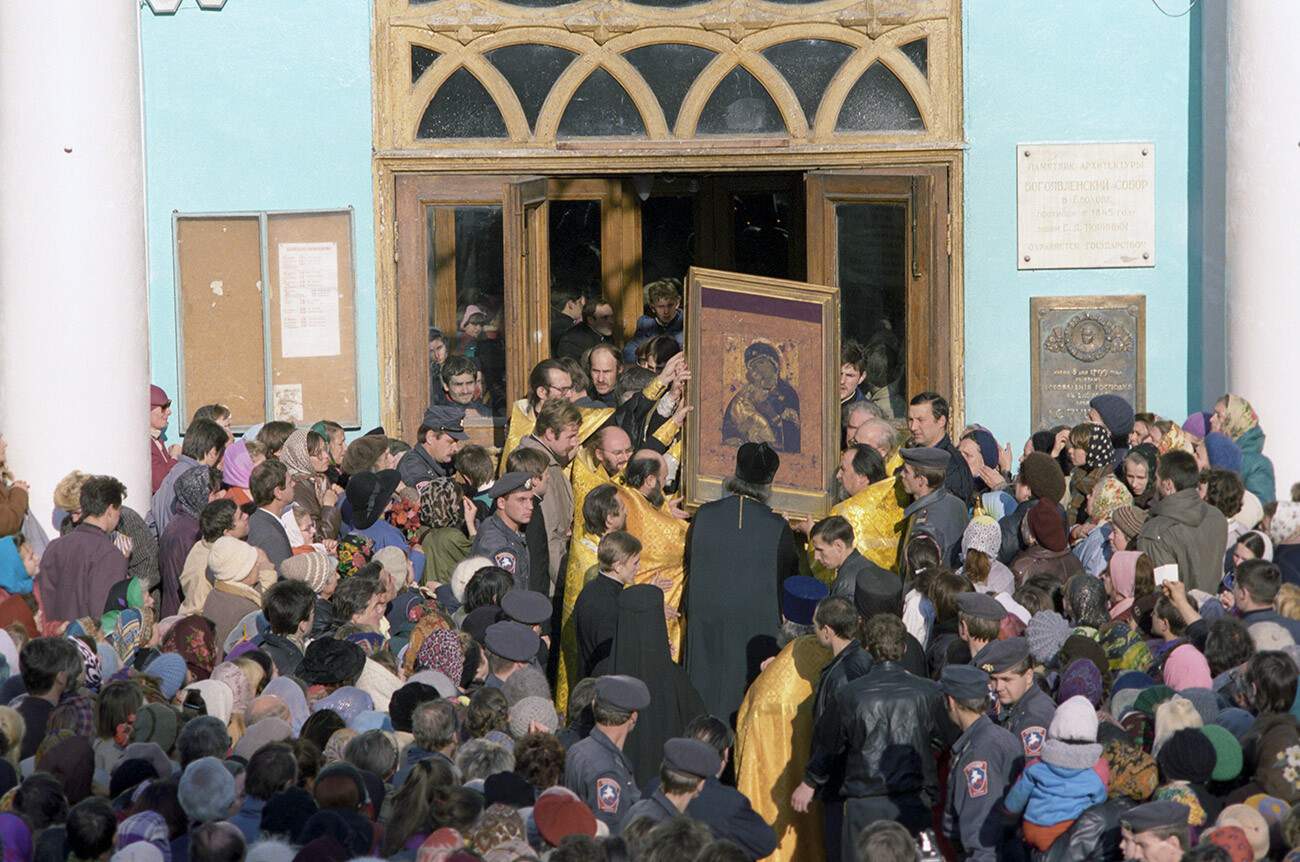
The country was craving change and didn’t want to deal with the old regime and politics en masse. However, there were still many people who were devoted to the Soviet past, including Stalin, despite all the revealing new information about his regime.
A portrait of Lenin was still featured in many places, while many institutions still held his name.

Many (especially of the elder generation) also continued to celebrate the anniversary of the 1917 October Revolution.
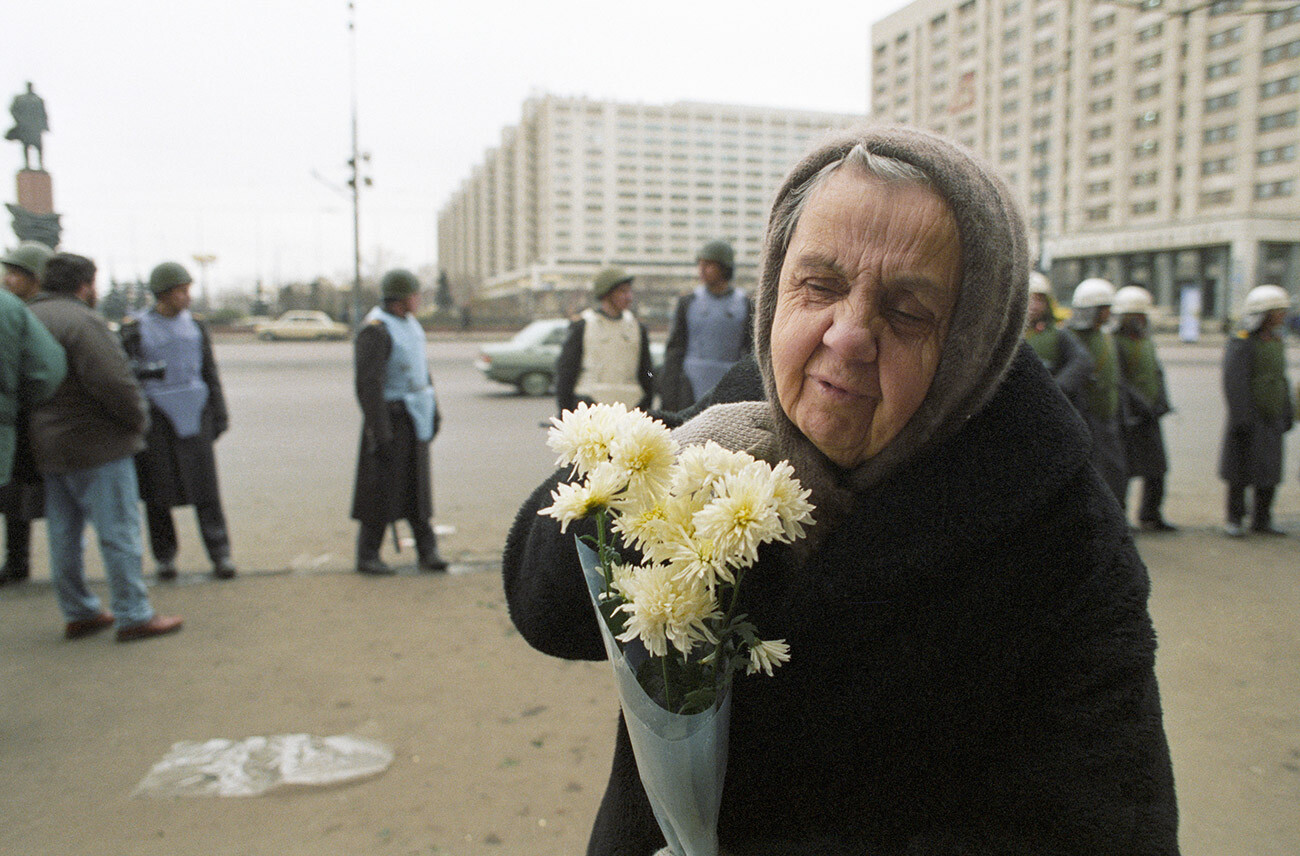
And Soviet symbols were still seen everywhere. The banner in the photo below says: ‘CPSU’ (‘Communist Party of the Soviet Union’).
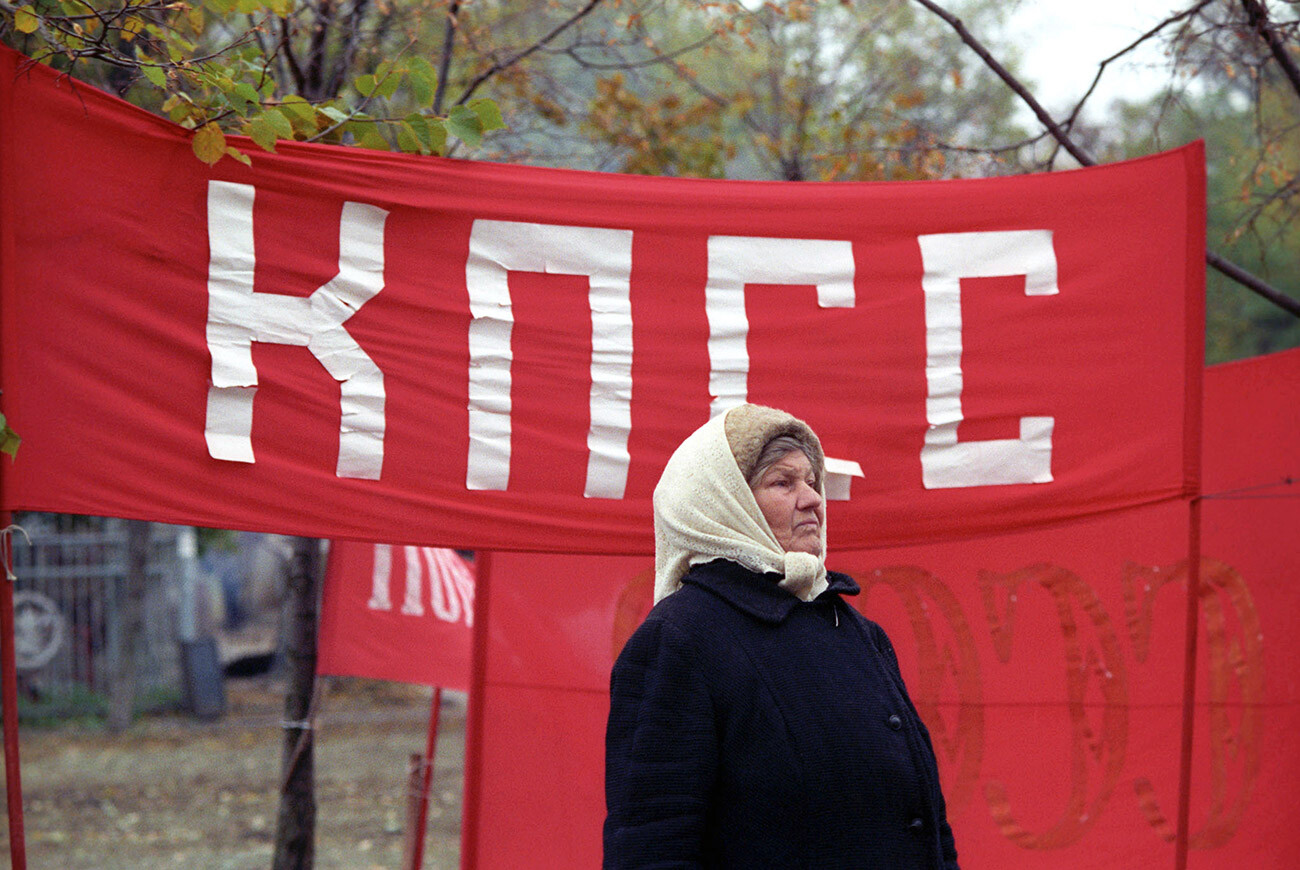
However, the breath of the West and freedom was too obvious and it even was seen in the way Moscow looked like in 1993.

Western cartoon characters were even featured at the New Year festivities on the Red Square.

And below is a photo of President Boris Yelstin opening the second McDonald’s restaurant in Moscow (the first was opened in 1990).
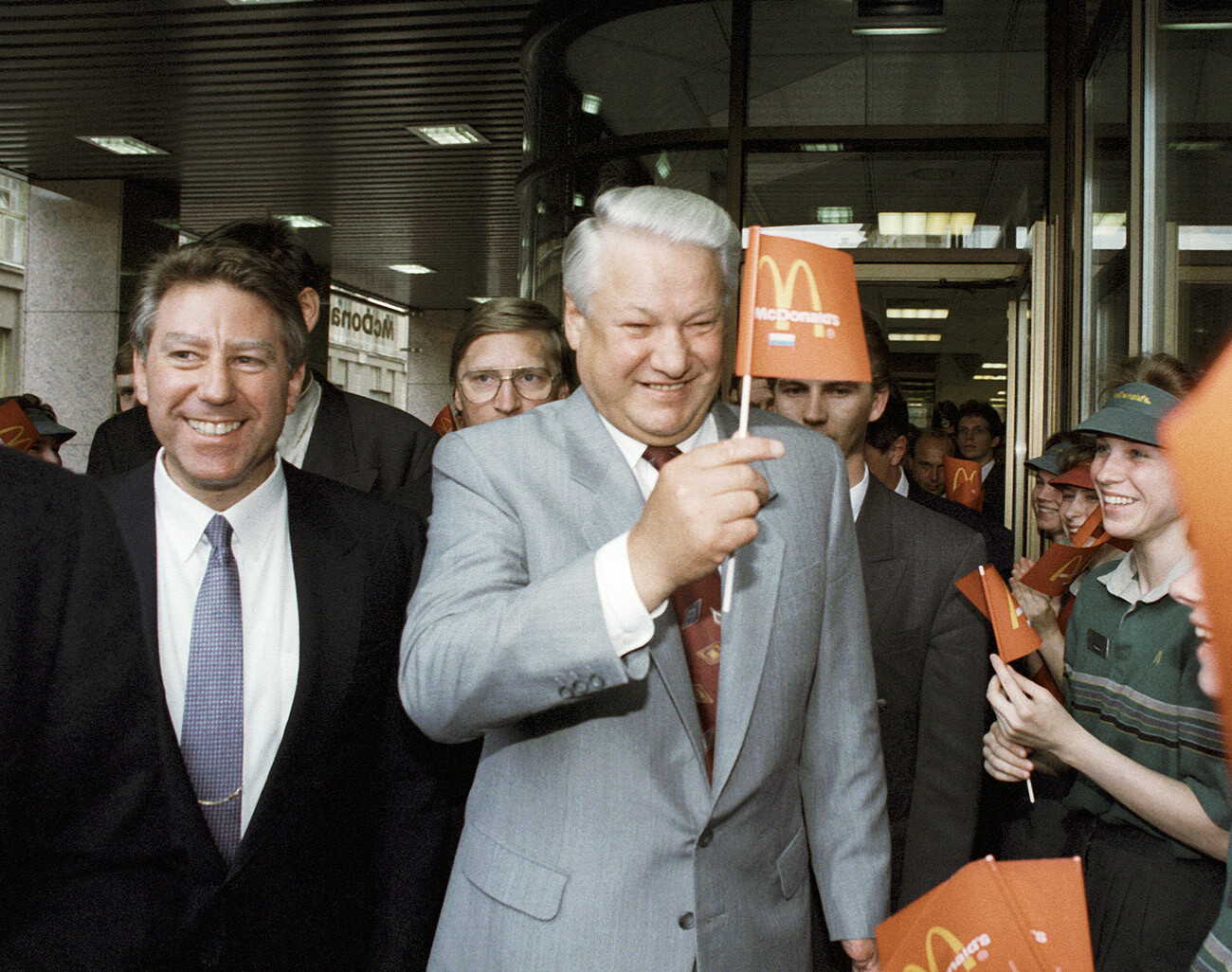
And below is his wife, Naina Yelstina, trying a coca-cola (or a milkshake?) at the opening of the third McDonald’s restaurant that same year.
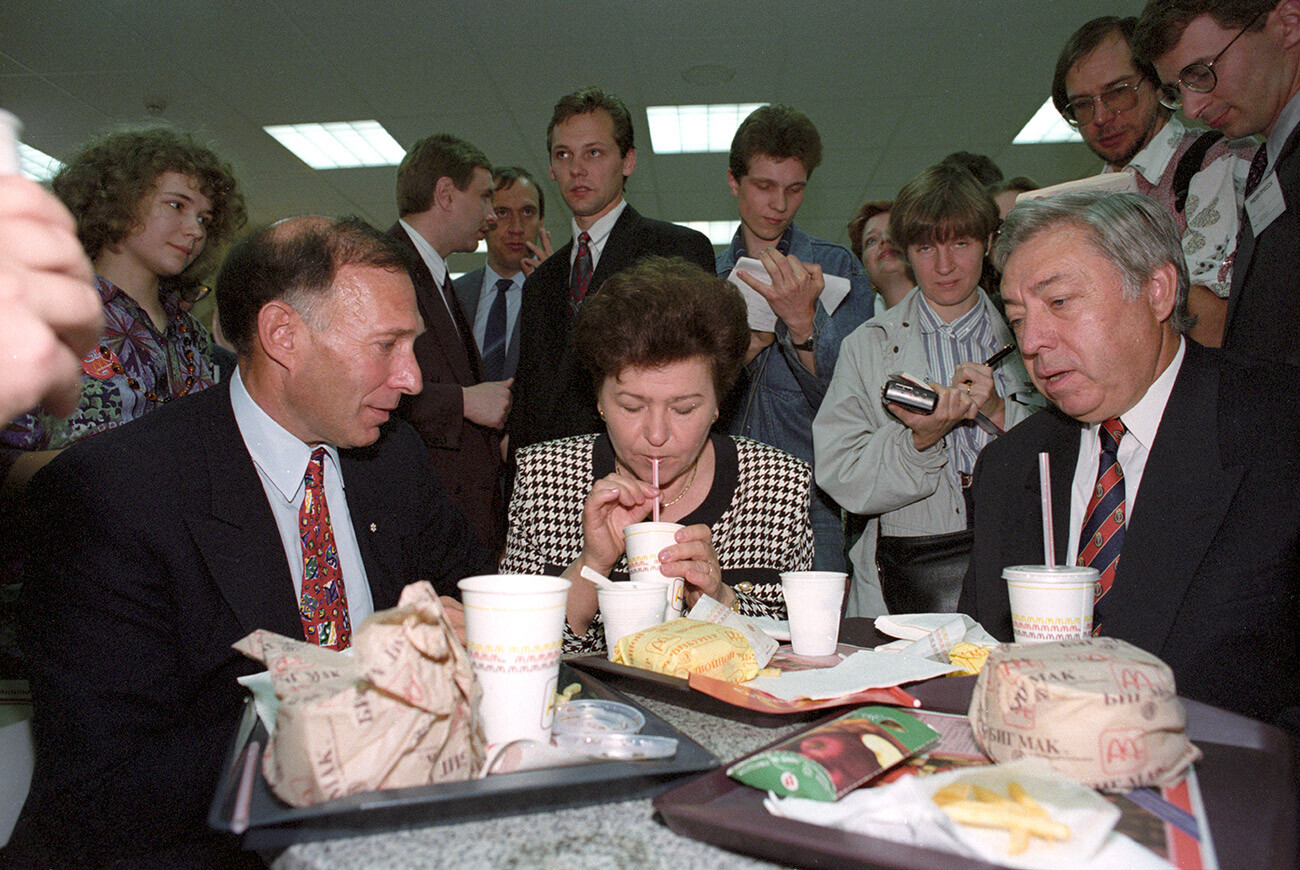
Kirsan Ilyumzhinov, president of Russia's republic of Kalmykia, is pictured having dinner at home.
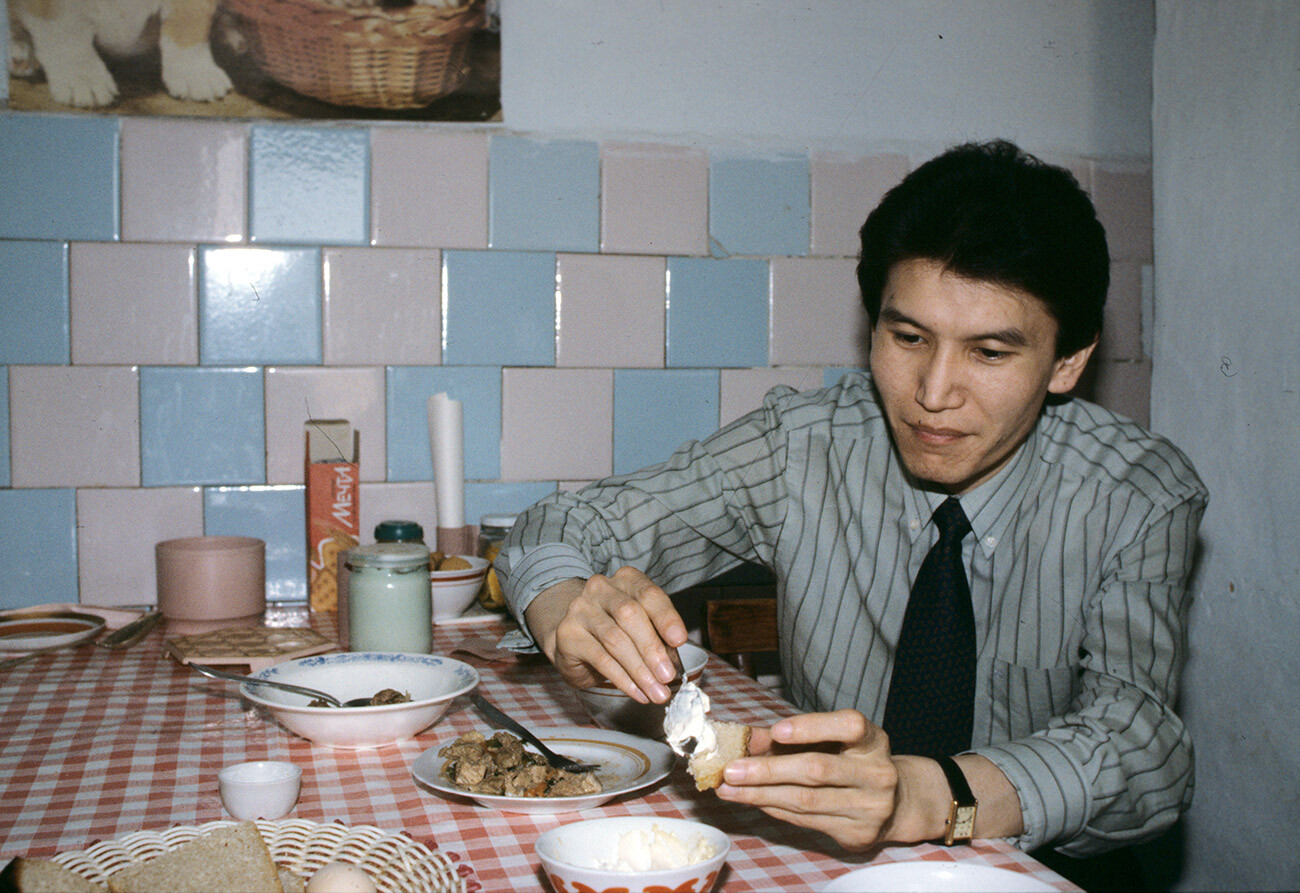
The liberalization of economics and the new free market began to appear.
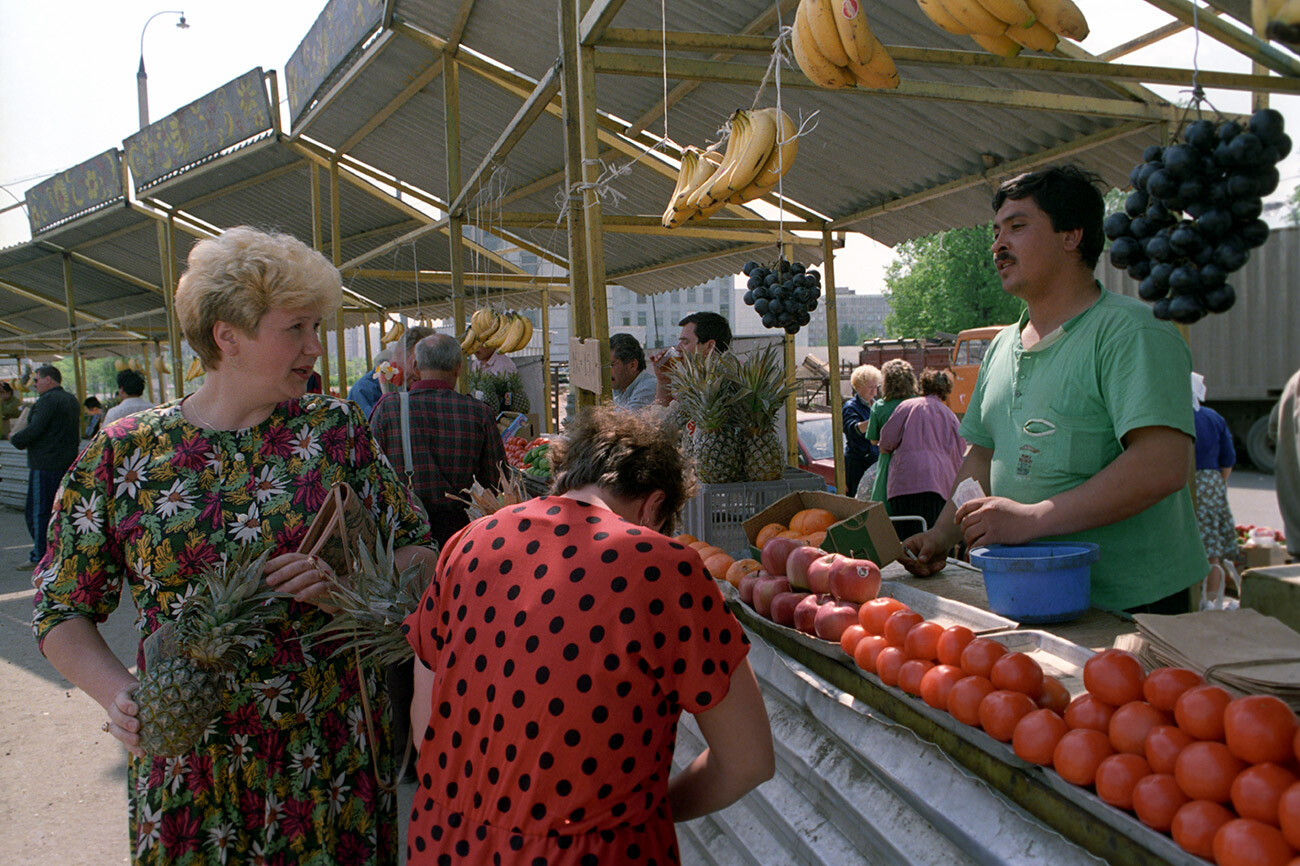
Meanwhile, the first proper supermarkets began opening in Russia.
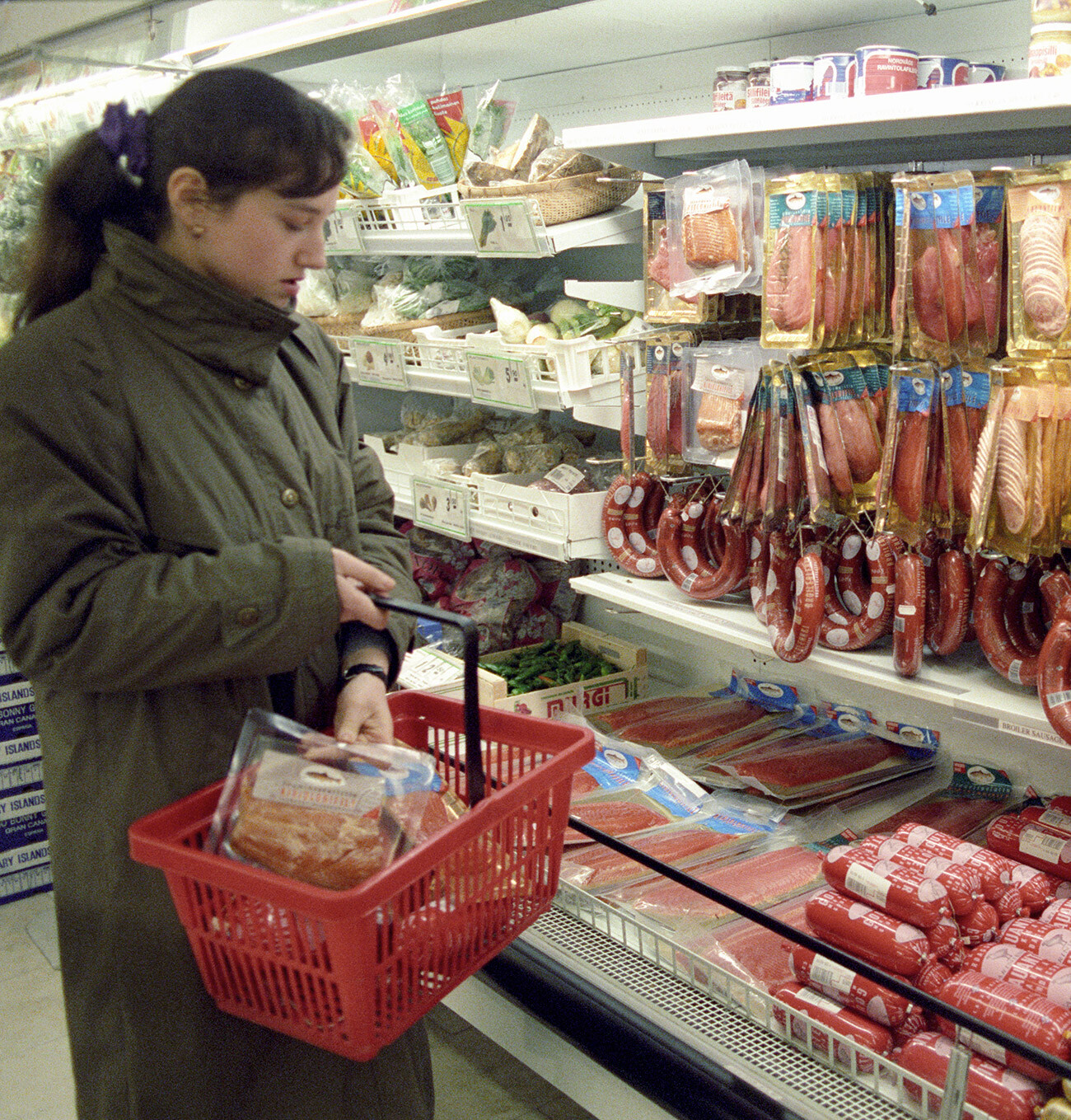
At the same time, the economics and system couldn’t handle the fast coming changes and it caused a crisis, which brought deficit and poverty to many.
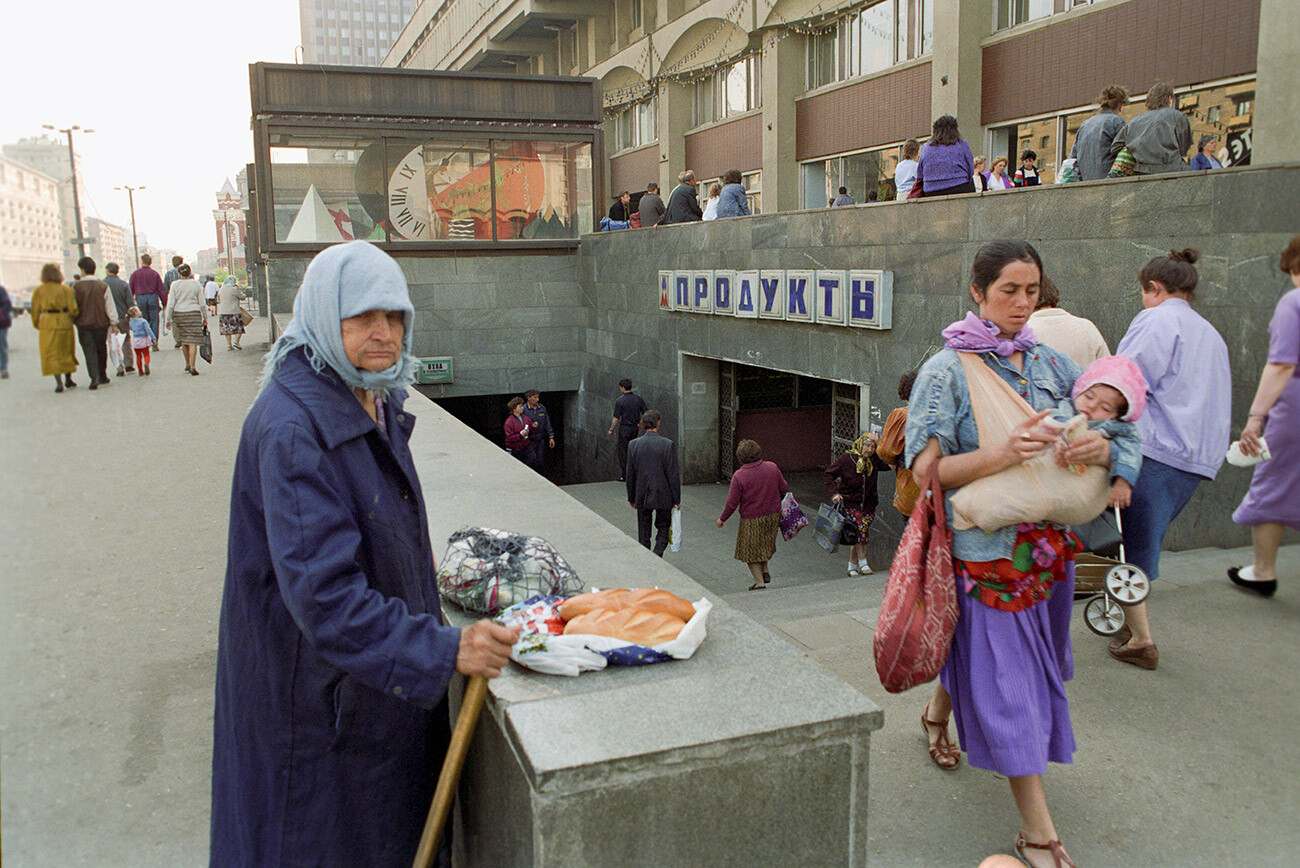
After the atheistic USSR collapsed, the Russian Orthodox Church again began receiving support from the state. Many churches were reopened and priests stopped being persecuted. Boris Yelstin and Patriarch Alexy II even met in the Moscow Kremlin.
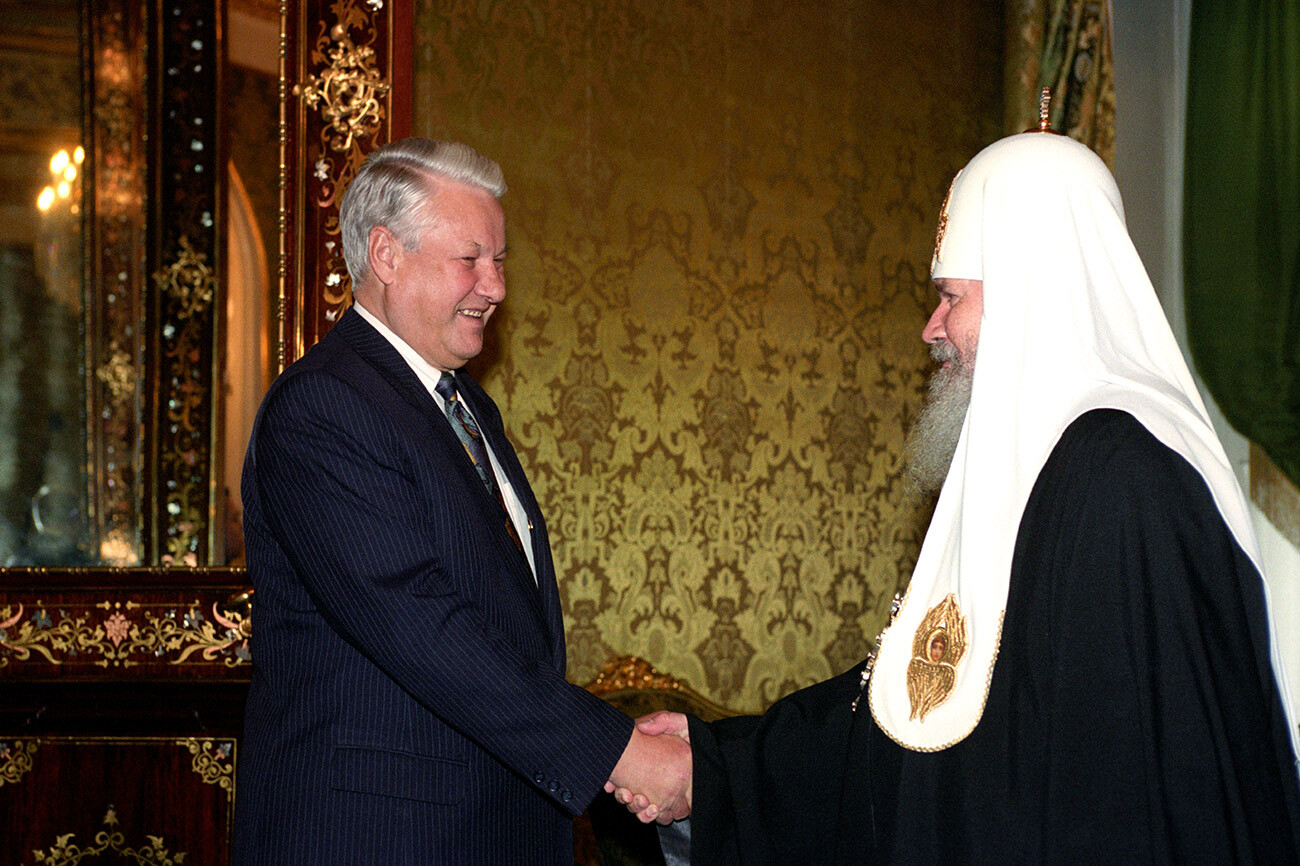
After 70-odd years, believers got a chance to openly confess their faith again. (Pictured below is the 'walk of cross', read more here.)
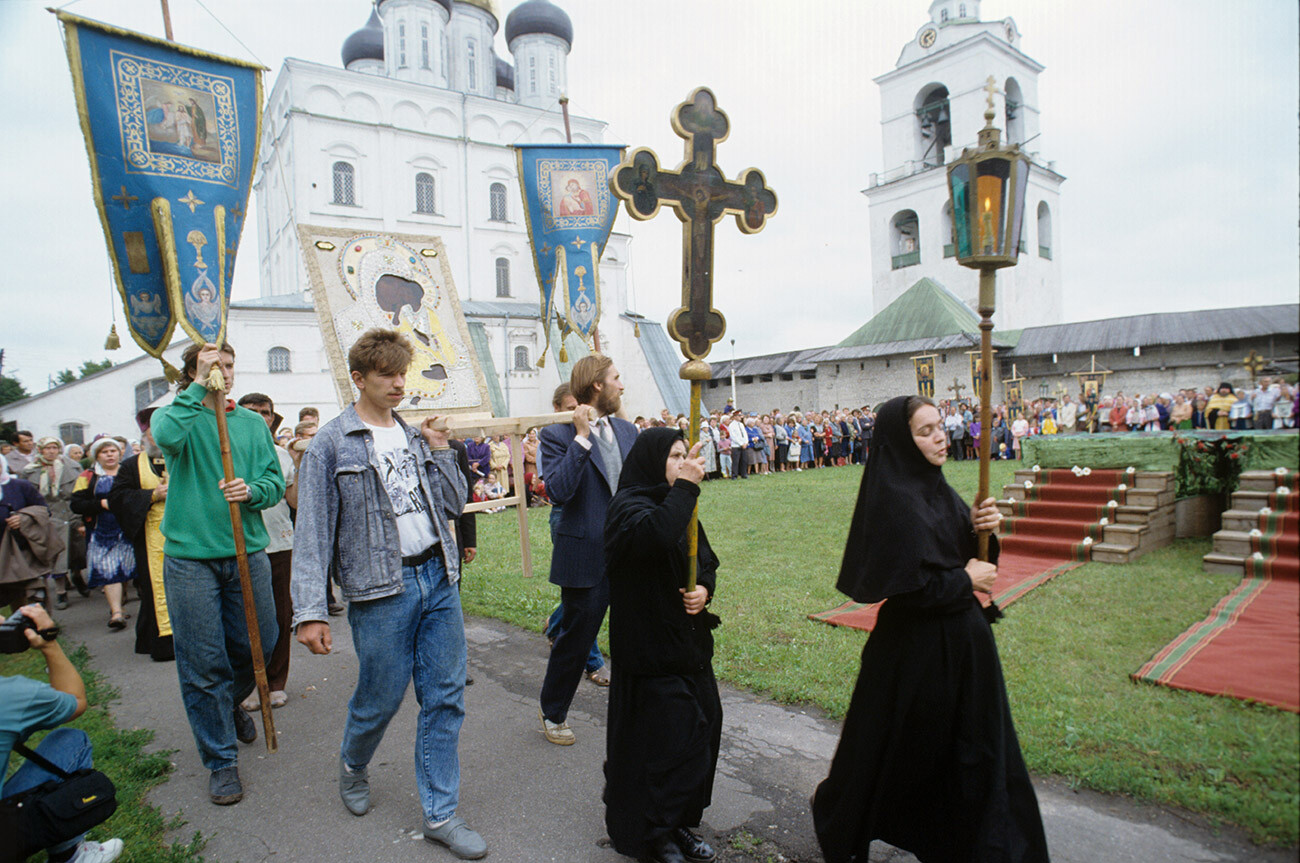
People also got the chance to openly marry in church again.
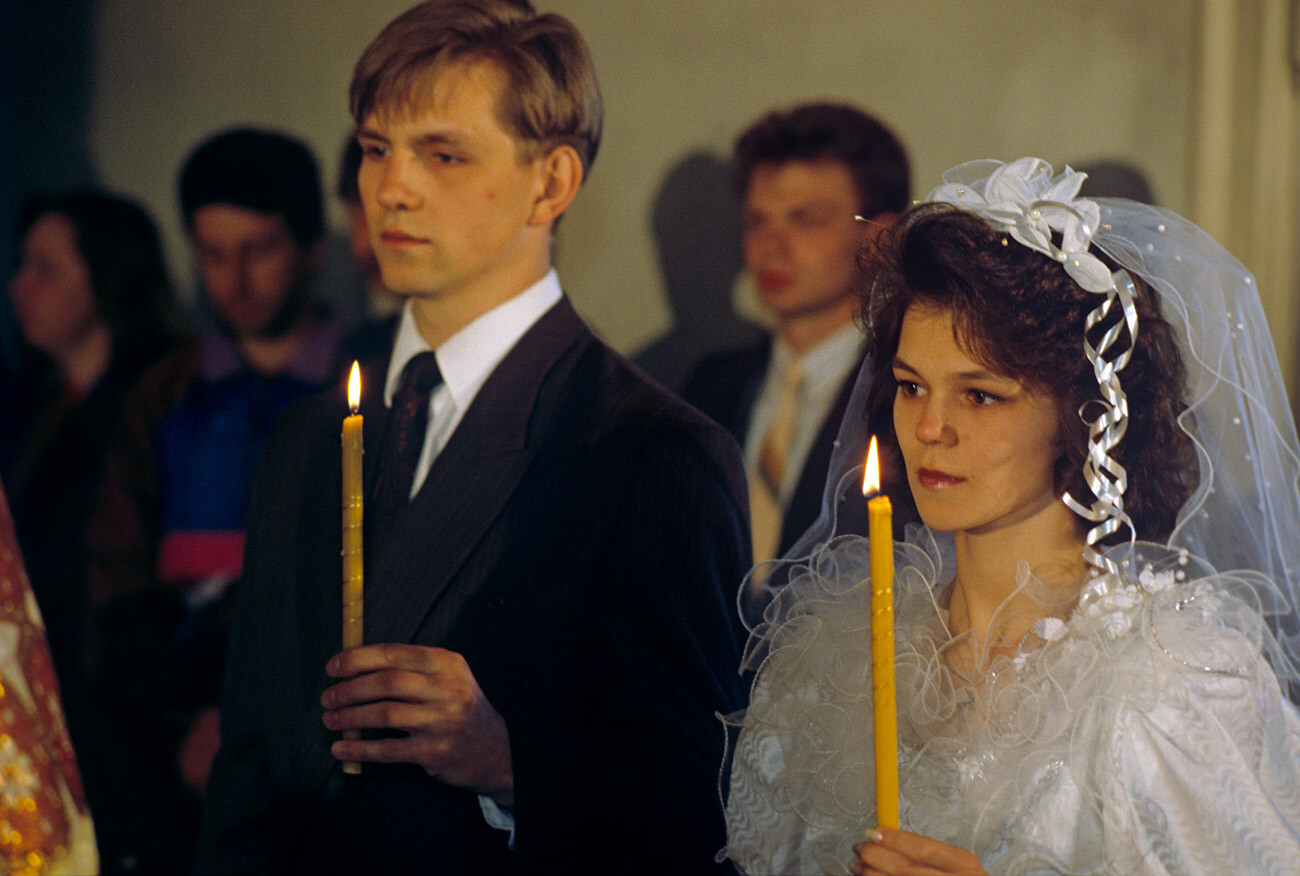
After years of working as a museum, the Kazansky Cathedral in St. Petersburg resumed its liturgies once more.
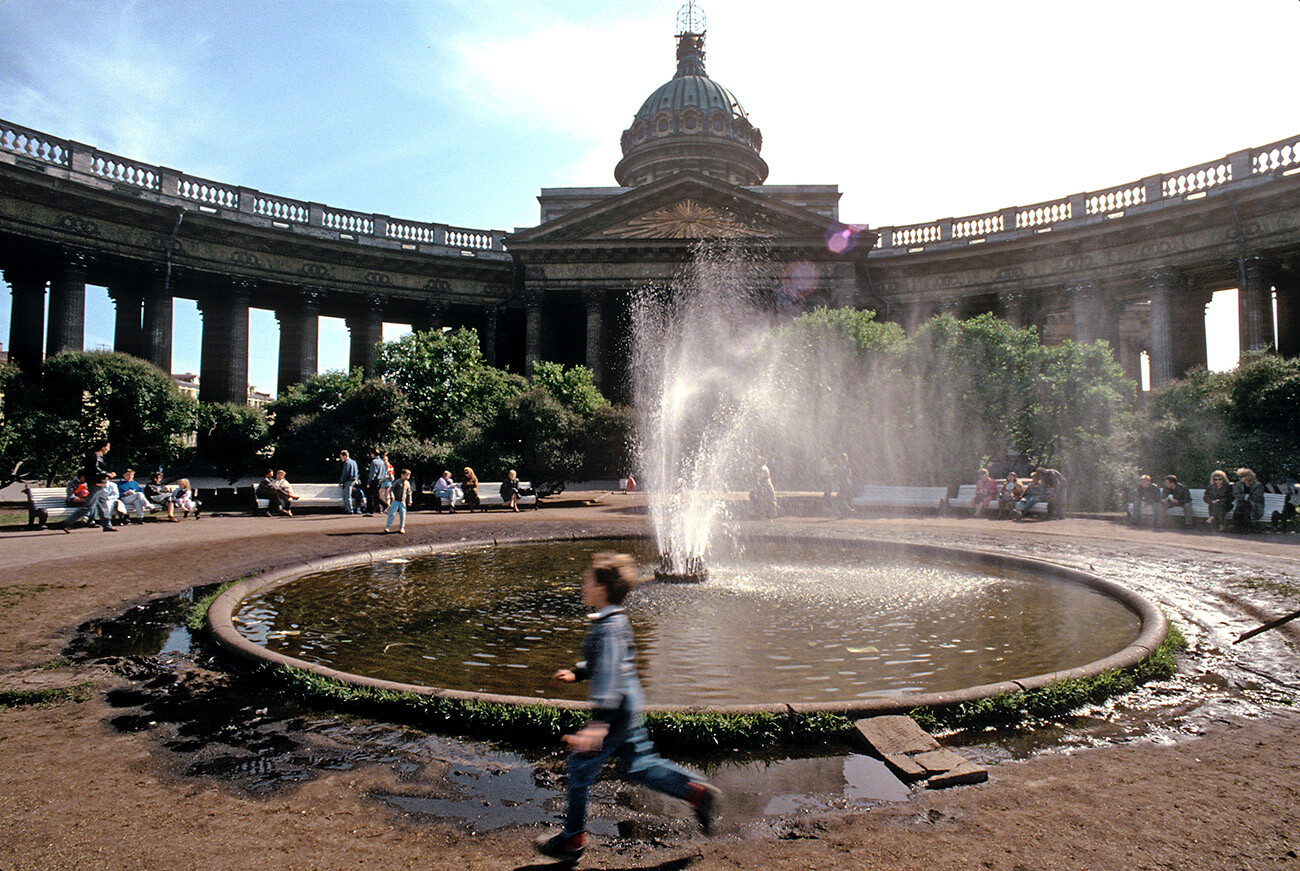
Pictured below is an Abbess of a monastery in deep prayer and thought.

The Red Square, which was, for almost 70 Soviet years, a place for parades and communist demonstrations, began holding very different events. For example, a concert by the U.S. National Symphony Orchestra conducted by Russian musical director, Mstislav Rostropovich.
Politics also got a more “human face”. Pictured below is prime minister Viktor Chermomyrdin playing accordion while taking a rest with family.
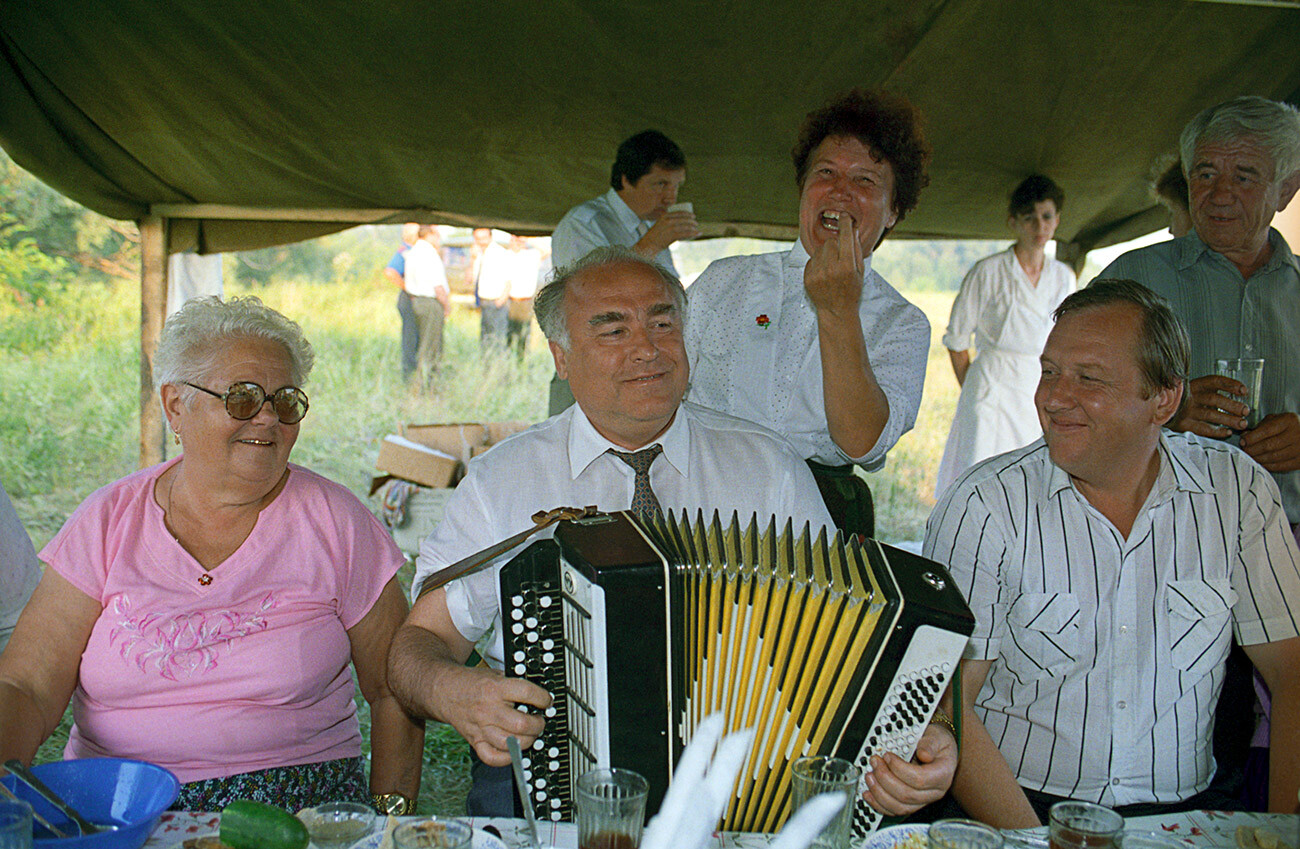
Girls became less shy and beauty pageants became even more interesting to watch.

People were free to express themselves in art and very bold and controversial projects appeared, including this musical duo called ‘Politsia Nravov’ (‘Vice Squad’) pictured below.

After years of dull, bland uniform clothes, women finally got the chance to try new fashions. Below is a woman choosing the best option in a fur store.
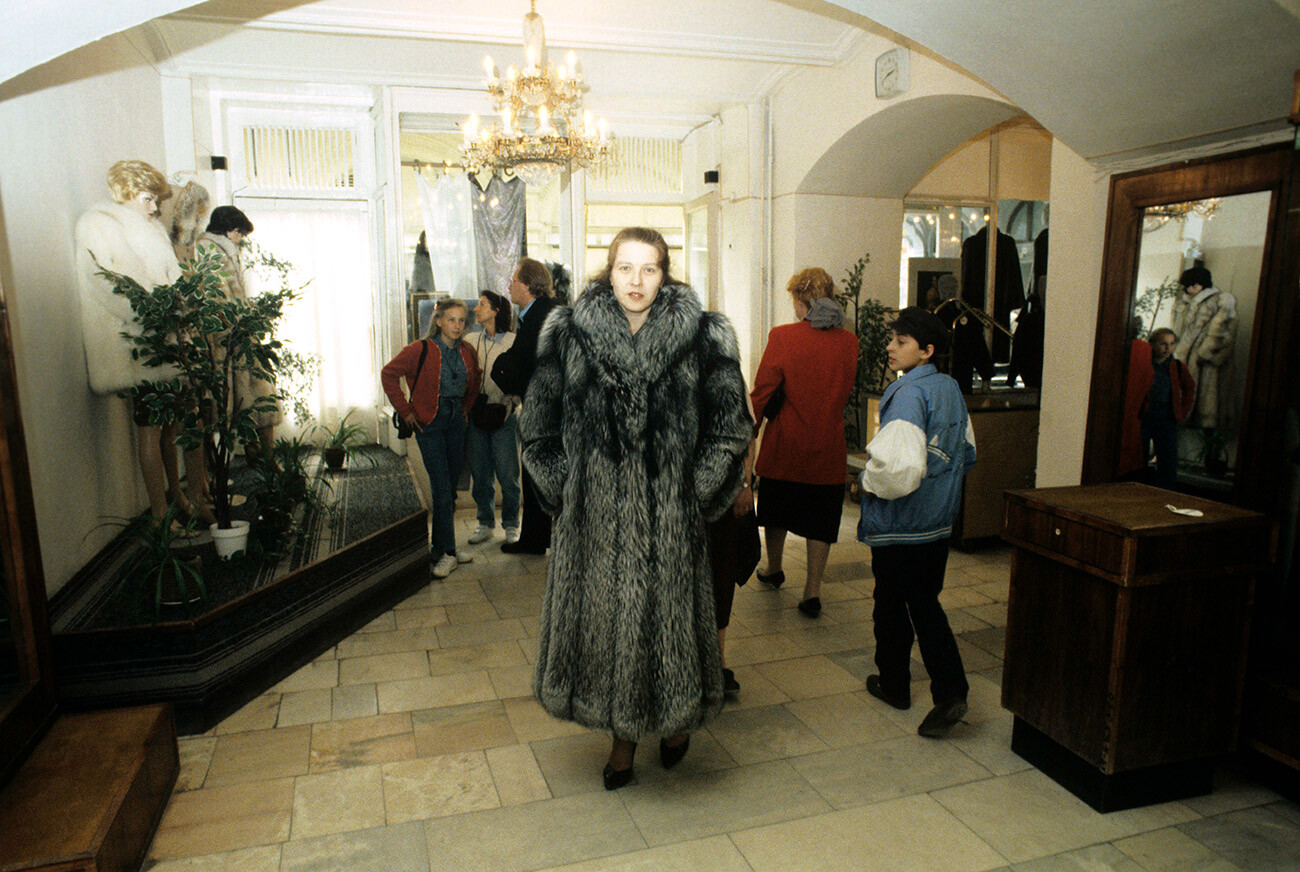
A stylish woman of the 1990s chatting on a public telephone.
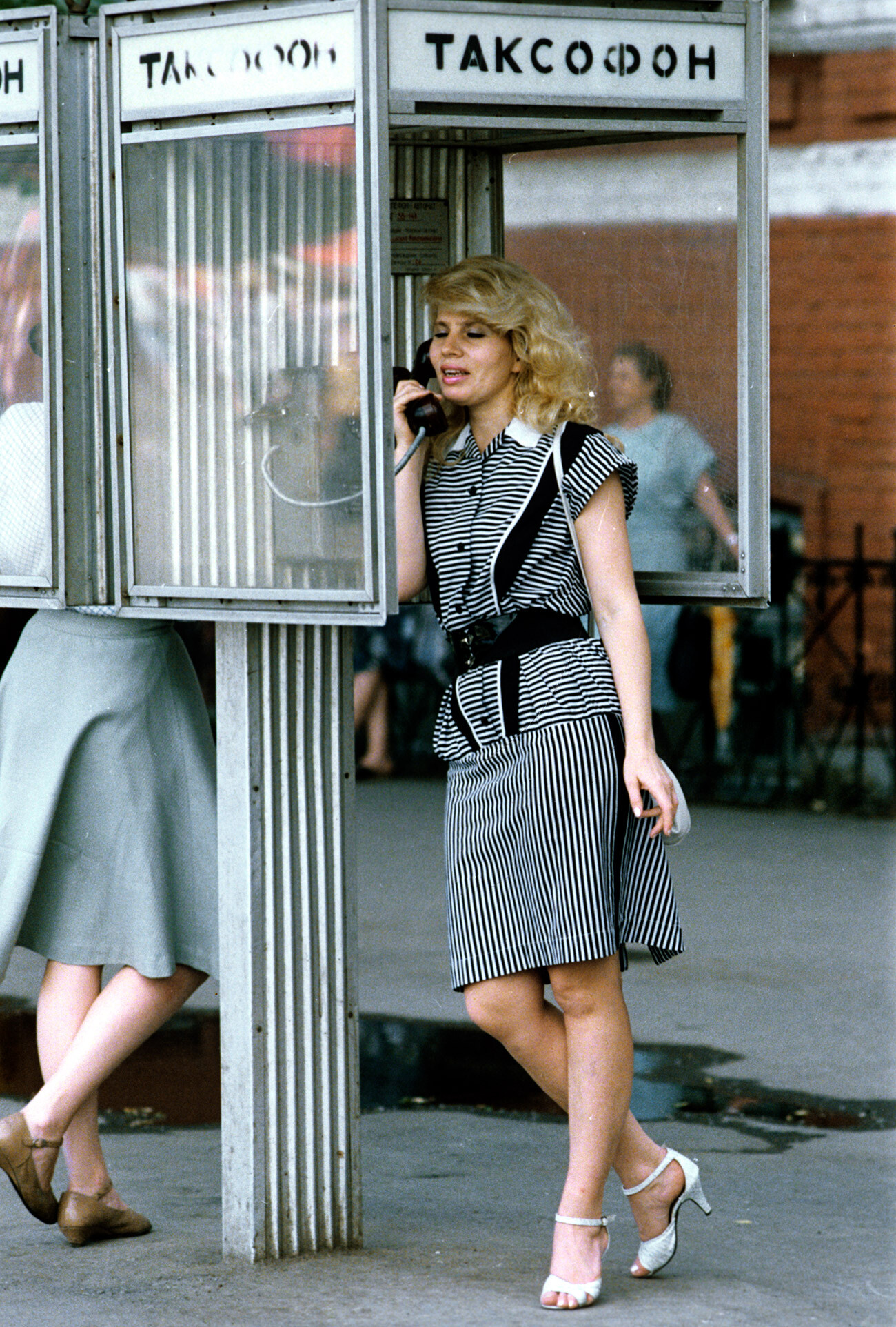
More cars appeared on the streets, seen below driving along the Kremlevskaya Embankment in Moscow.
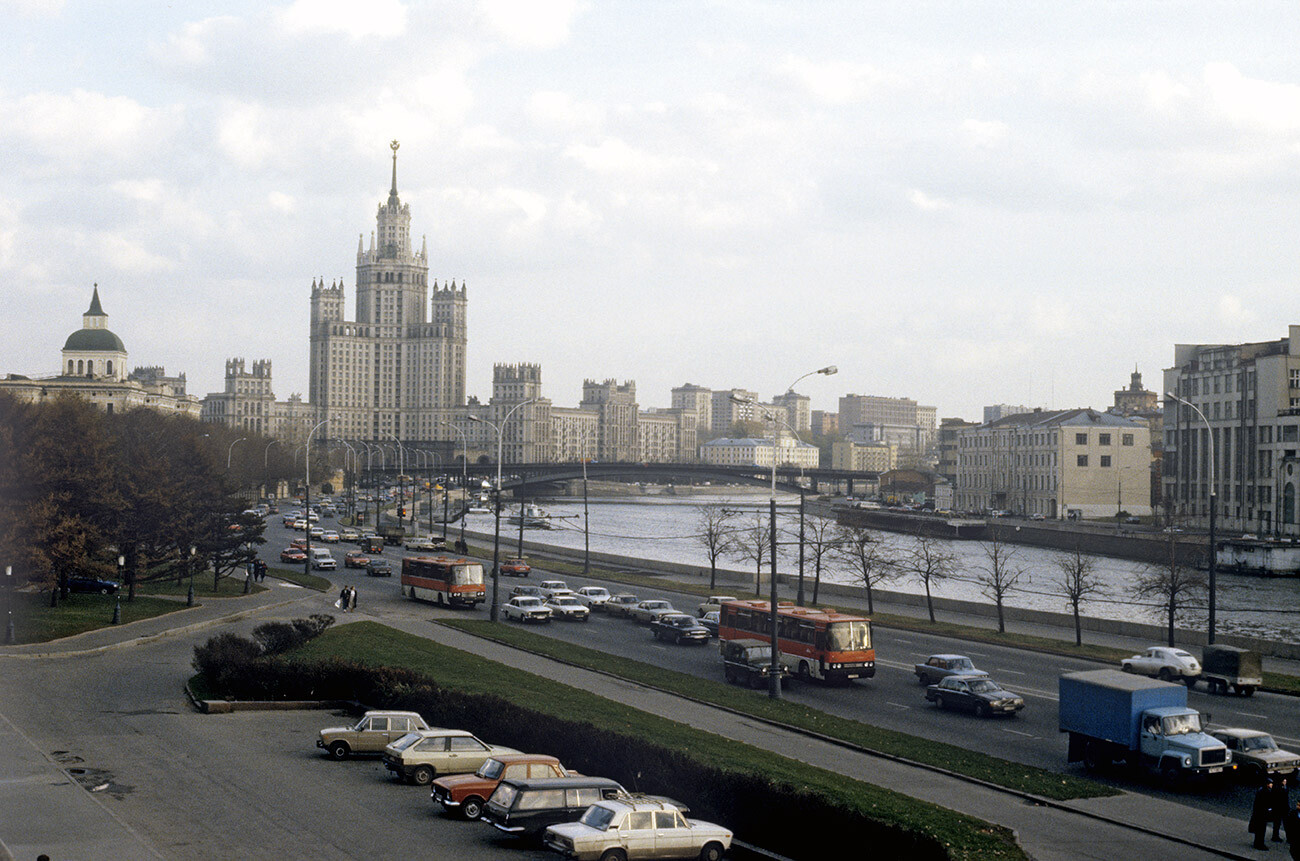
River boats also became more frequently used in Moscow.
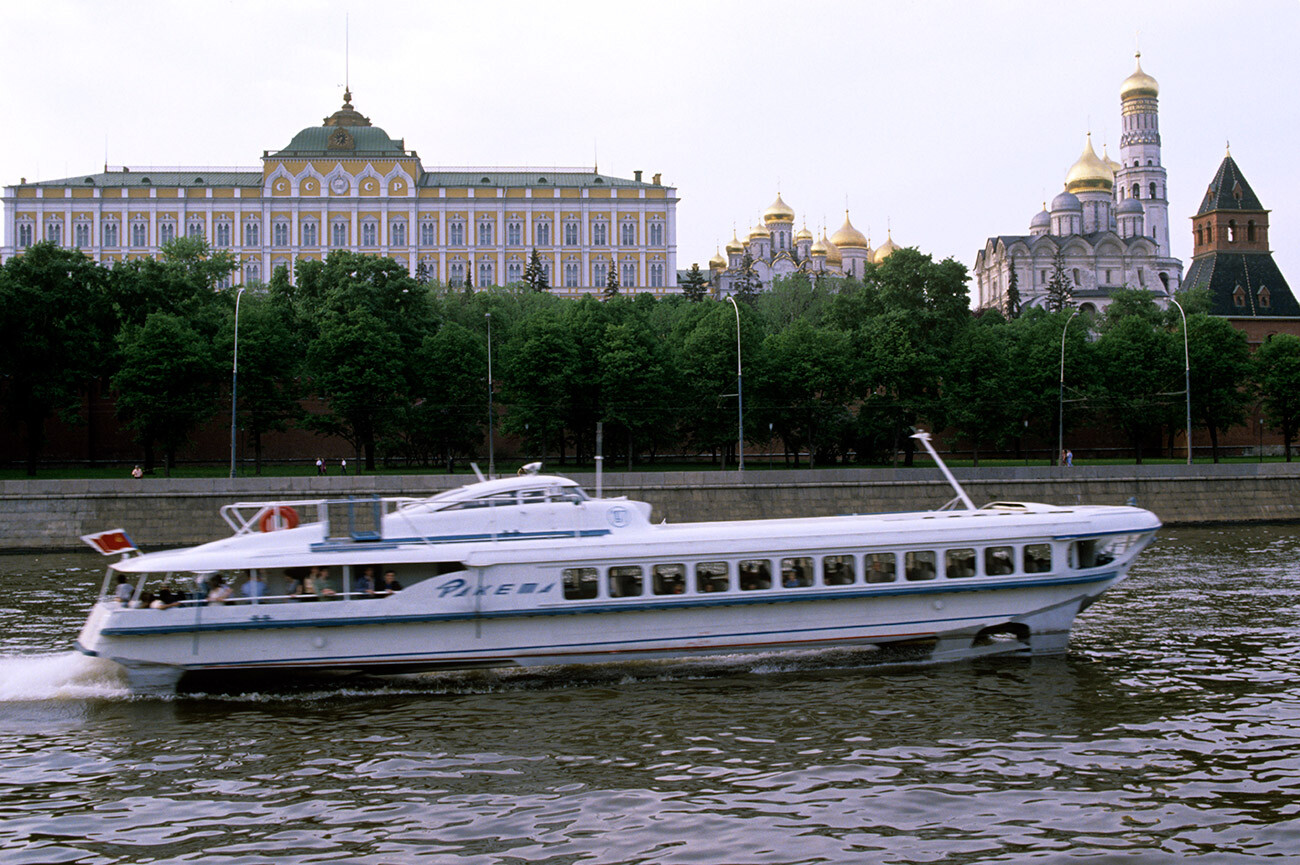
Young cyclists hiding from a sudden summer downpour.
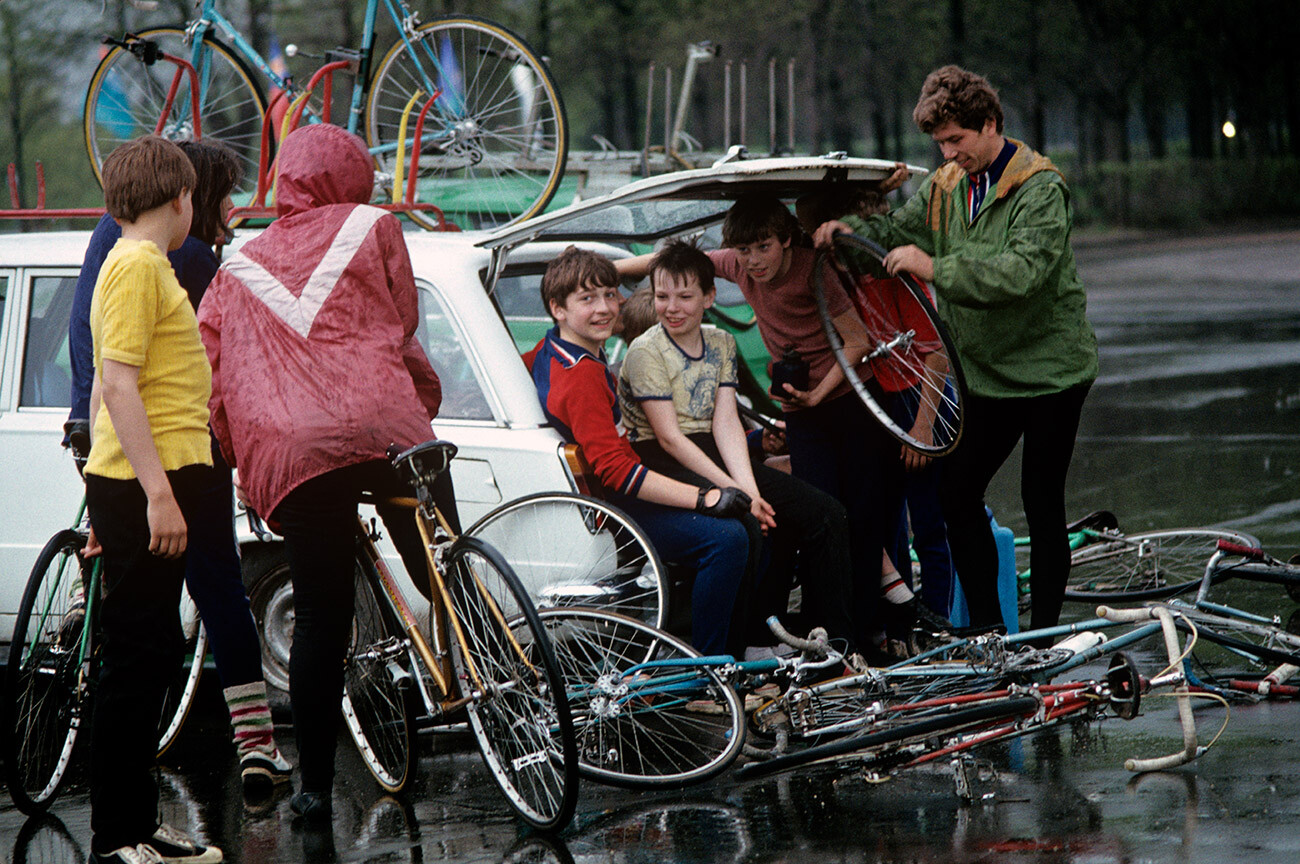
A street vendor selling open-air BBQ in the park.

And, finally, kids got to enjoy their childhood more, like having a day out in a theme park!
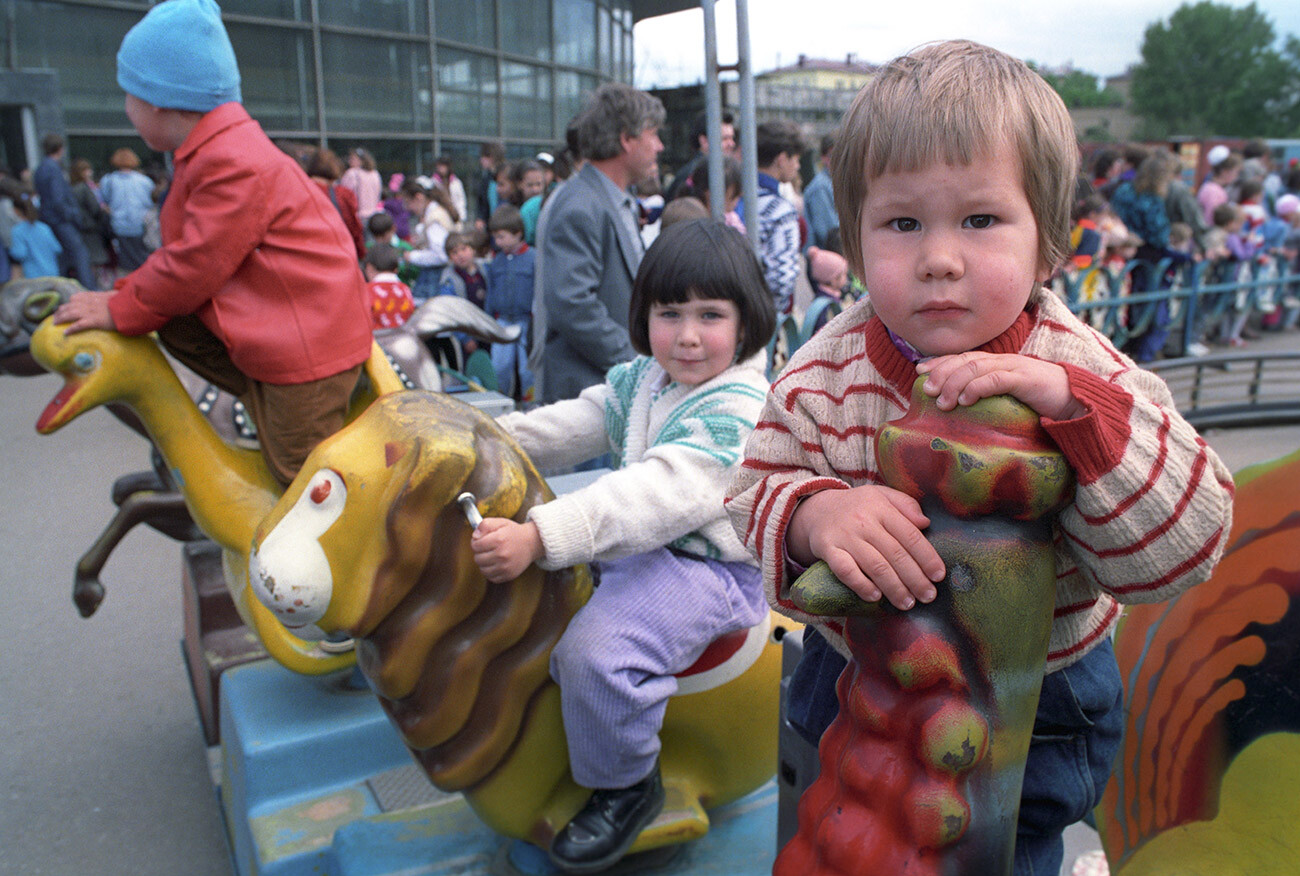
Dear readers,
Our website and social media accounts are under threat of being restricted or banned, due to the current circumstances. So, to keep up with our latest content, simply do the following:
If using any of Russia Beyond's content, partly or in full, always provide an active hyperlink to the original material.
Subscribe
to our newsletter!
Get the week's best stories straight to your inbox